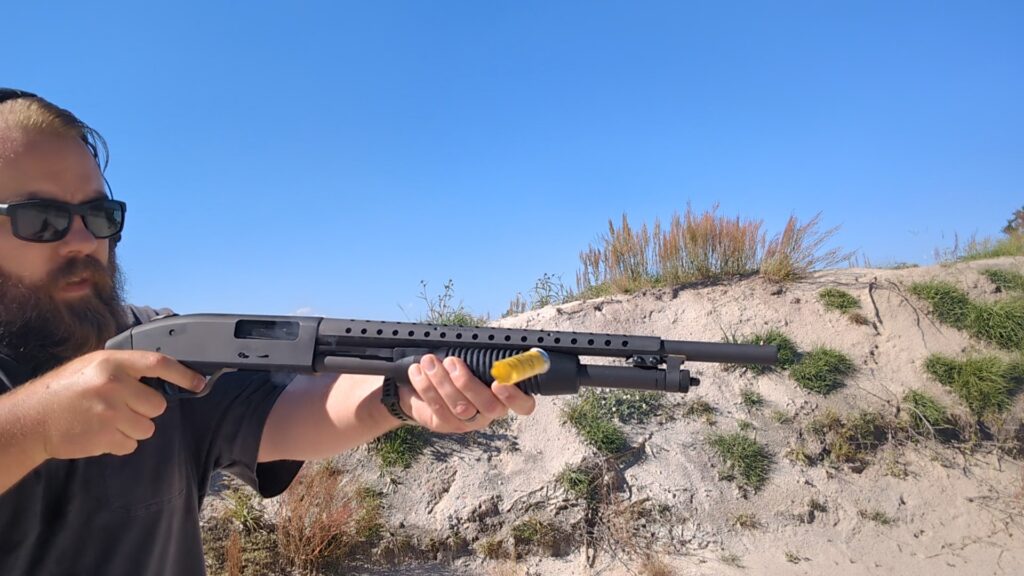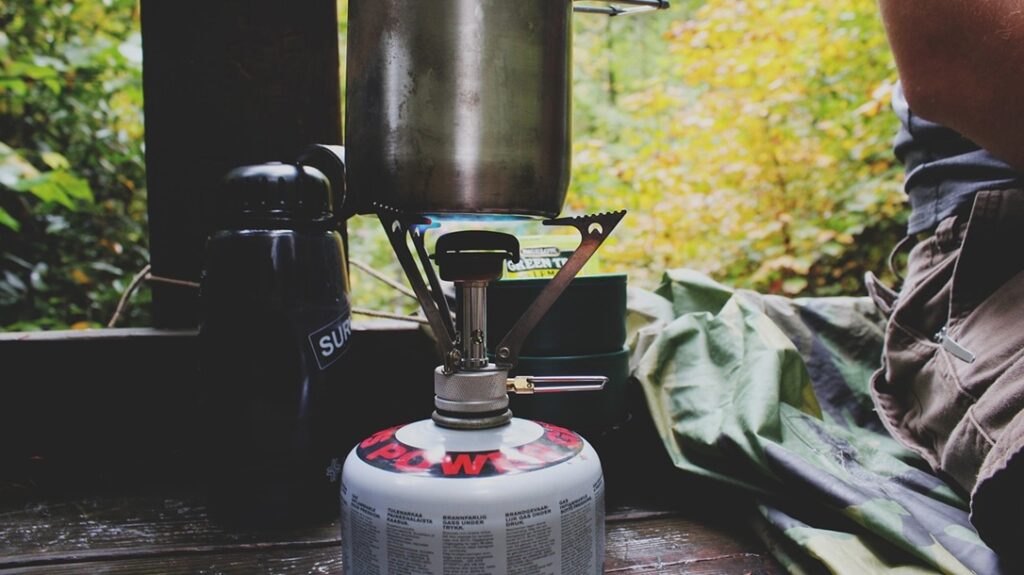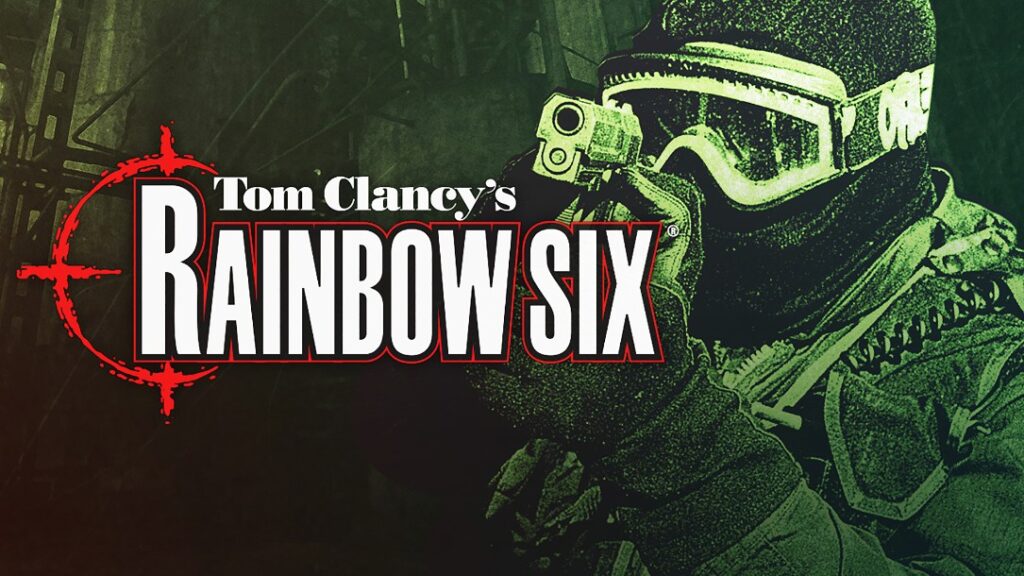Machine guns have a very fascinating history in warfare. Ever since we figured out ways to throw lead at each other, we tried to find ways to do it faster. Machine guns are the ultimate lead-throwing device. There are several genres of machine guns; today, we are diving into a brief history of light machine guns.
What’s a Light Machine Gun
The definition of machine guns has changed drastically over the years. A Gatling gun is one of the first machine guns, but today, the ATF wouldn’t define it as a machine gun; rather, it is a semi-auto firearm due to its firing mechanism. Light machine gun is also a term that’s changed over the years. The M1919A4 was considered a light machine gun even though it weighed 31 pounds without its bipod.
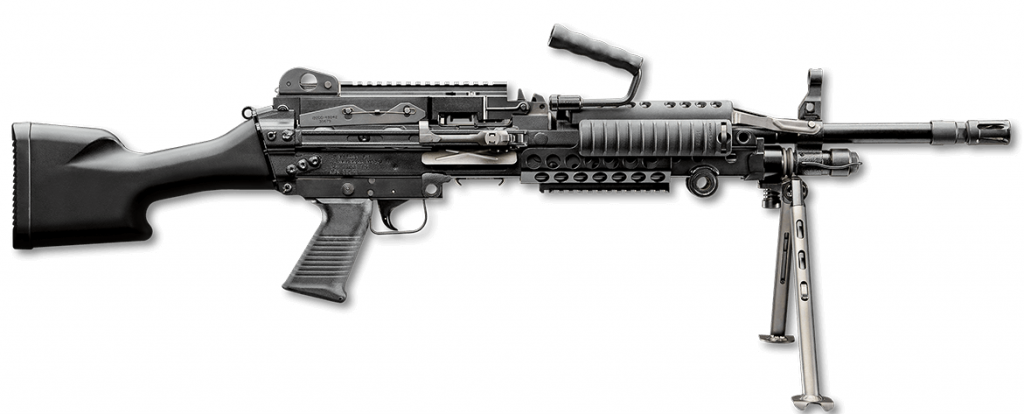
Advertisement — Continue Reading Below
The modern definition of a machine gun has evolved to the point where we have a fairly clear picture of the concept. A modern light machine gun—a significant advancement in warfare—chambers an intermediate cartridge that is belt-fed, fully automatic, and air-cooled. Most importantly, it’s a weapon that a single soldier can use, distinguishing it from crew-served weapons. An assistant may be used but isn’t required by doctrine.
It’s important to understand that not all Squad Automatic Weapons meet the definition of light machine guns. Weapons like the RPK and M27 IAR are more akin to machine rifles rather than light machine guns. While the distinction may be arguable, it is not necessarily relevant to the history of light machine guns, which we are focusing on in this article.
The Rise of Light Machine Guns
World War I, a war fought with modern weapons but old-world tactics, was a turning point in the development of light machine guns. The war, which came to a near stalemate at several fronts, with miles of trenches, bombs, and wire forming a barrier that your Europeans and Americans died fighting against, highlighted the need for more efficient firepower. The machine gun, which became the star of infantry combat, showed commanders and tacticians that automatic fire was here to stay, paving the way for the rise of light machine guns.
Advertisement — Continue Reading Below
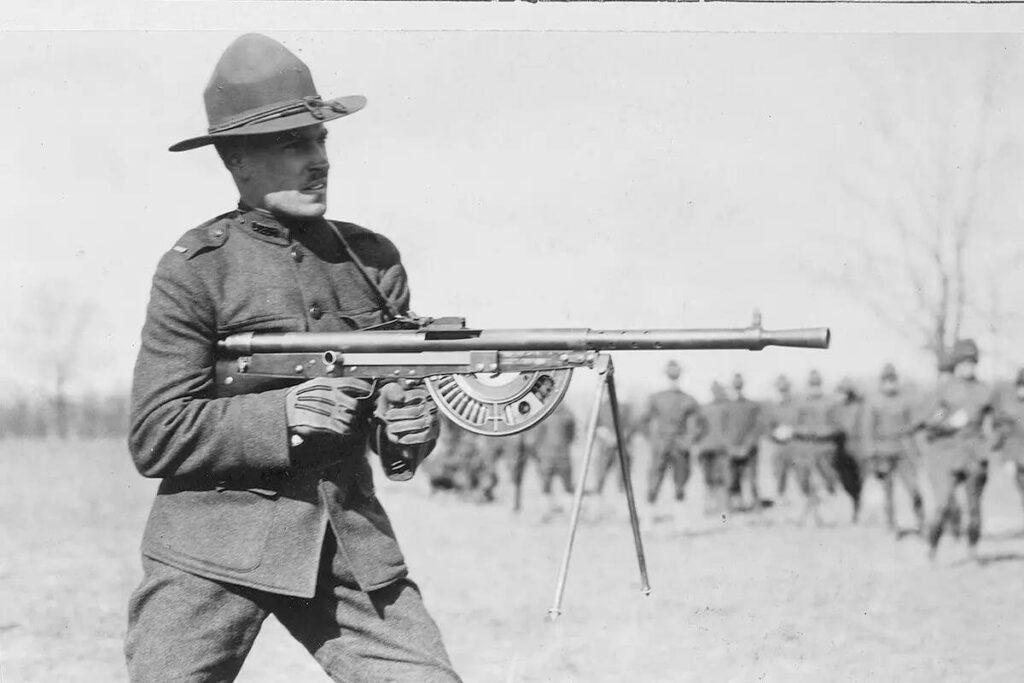
This led to the creation of early squad automatic weapons. The Allies had guns like the Chauchat and the Lewis gun. The Germans had guns like the Madsen. These all fell into the category of machine rifles. Lightweight firepower was a must-have, and by the end of the war, machine rifles and submachine guns became new parts of modern military arsenals.
The Evolution of Light Machine Guns and Machine Rifles
Machine rifles evolved, and guns like the Bren and the BAR took center stage. The Germans developed the first modern General-Purpose Machine Guns with the MG 34 and MG 42. These were much lighter than most machine gun designs and purpose-built for infantry forces. They chambered 7.92mm Mauser and were belt-fed.
Advertisement — Continue Reading Below
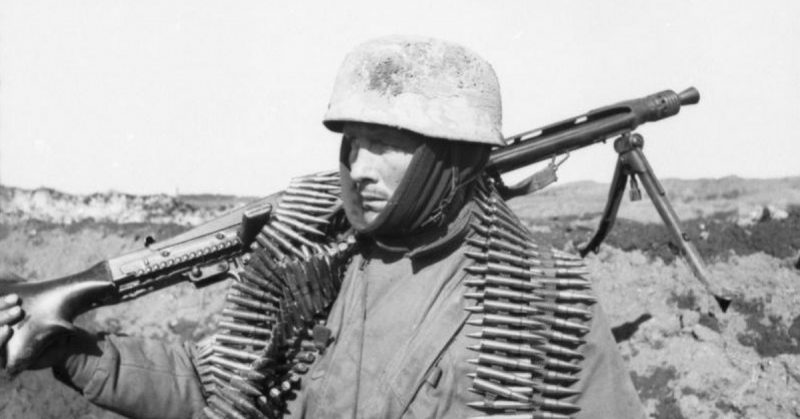
Military forces worldwide looked for ways to trim the weight of their old machine guns to make them easier for the infantry to carry. That’s how we got the M1919A4, A5, and A6. These were adaptations of guns and weren’t as graceful or handy as the purpose-built German designs. While they were considered light machine guns of the era, these were still crew-served weapons.
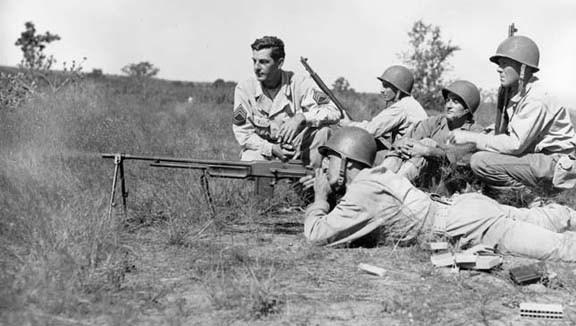
Advertisement — Continue Reading Below
These weapons formed a base of fire weapons for the early world of maneuver warfare. None are what we consider light machine guns these days. Machine rifles, in particular, offered an early version of a squad support weapon for basic infantry squad functions.
The SMG Entry
The infantry owns the last 100 yards of every battlefield. As units came into close combat territory, guns like M1919A6 and even the lighter MG42 became more difficult to use. As you close into close combat, even the one-man-wielded BAR becomes difficult to mount. This is where submachine guns came in.

Advertisement — Continue Reading Below
The submachine offered capable and portable firepower. Guns like the Thompson and M3, the German MP40, the British STEN, and a handful of Russian bullet hoses provided much smaller, faster-firing weapons that could suppress the enemy up close and kill the enemy easier than battle rifles and 30-plus pound machine guns.
As other fire teams or squads maneuvered on the enemy, submachine guns could keep heads down. These became proto-SAWs that were only efficient in close combat.
A Break For the M14
After World War II and Korea, the Army squad was armed with M1 Garands, M3 SMGs, BARs, and M1/M2 carbines. The Army wanted to squeeze all those guns into one and simplify the logistics. This resulted in the M14 and the short-lived M15. They would be rifles capable of automatic fire and replace a half-dozen weapons in an infantry squad. The M14 would be both the main fighting arms and the gun responsible for laying down suppressive fire within a rifle squad.
Advertisement — Continue Reading Below
In 1943, the Soviets began developing a light machine gun as we know it today. This gun became the belt-fed RPD, which chambered the 7.62x39mm round. It’s a true light machine gun and became an enemy weapon in Vietnam.
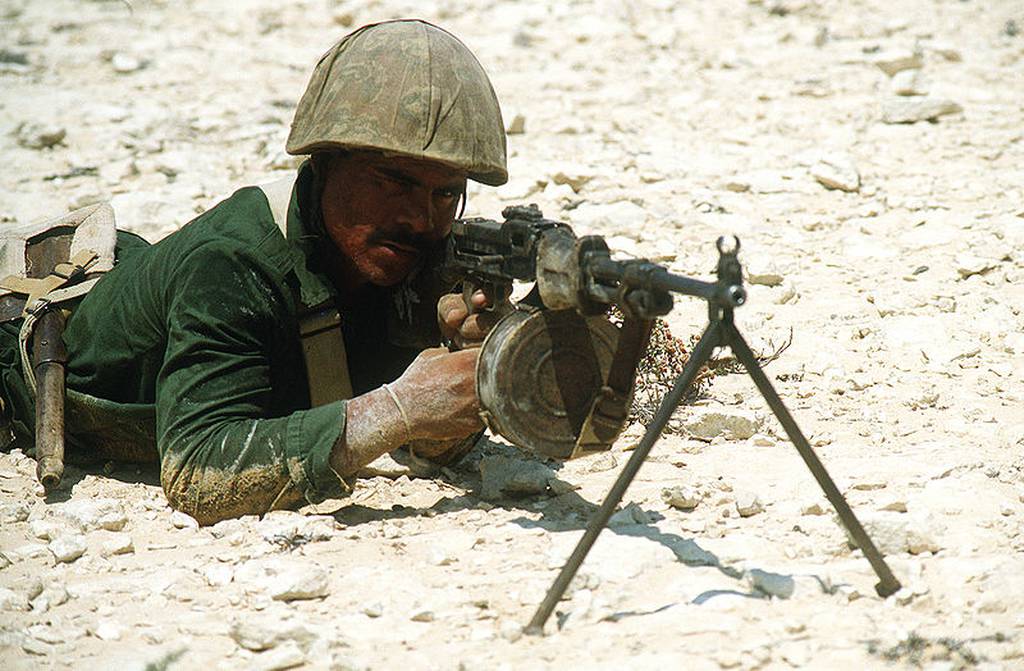
The M60 would be the belt-fed medium general-purpose machine gun, and that would be that. As we all know, that was not that. The M14 had a service life shorter than those guys who couldn’t pass a hump at infantry school. The M16 replaced it in Vietnam, and it was the M16 and the M60, but the M60 was a crew-served weapon that wasn’t organic to a rifle squad.
Advertisement — Continue Reading Below
As a replacement, the Army issued snap-on bipods. These were issued one per fireteam, and the automatic rifleman with the bipod-equipped M16 was allowed to hit go on his fire selector. During Vietnam, Eugene Stoner introduced the Stoner 63, which the United States military tested in small numbers.

The Marines found it too maintenance-heavy for general use. The SEAL Teams tested it and loved it. Specifically, they loved the belt-fed light machine version of the gun, an 11.7-pound, belt-fed 5.56-caliber machine gun. This is one of the first successful, major implementations of a light machine gun.
Advertisement — Continue Reading Below
The Cold War Til Today
Throughout the 1970s, belt-fed light machine guns became more in vogue. The Soviets experimented with the IP-2 in 5.45. The Belgians developed the 5.56 FN Minimi. The Spanish adopted the CETME Ameli, and on and on. This led to the United States’s own Squad Automatic Weapon. The M249 is an American adaptation of the FN Minimi and has served since 1984.
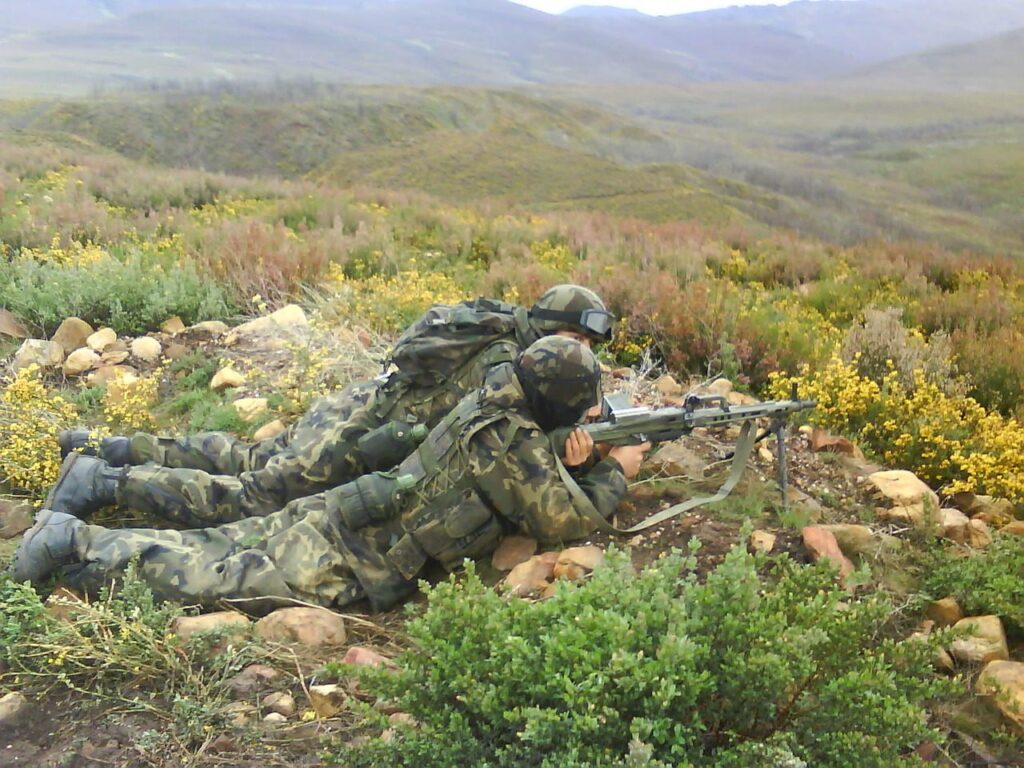
The light machine gun concept is falling out of favor. Guns like the Evolys from FN are impressive, but we are seeing a move to machine rifles worldwide. There has also been a move from light machine guns to lighter medium machine guns that have more reach and punch. As part of the NGSW program, the M250 from SIG was selected in SIG’s not-so-intermediate 6.8mm cartridge.
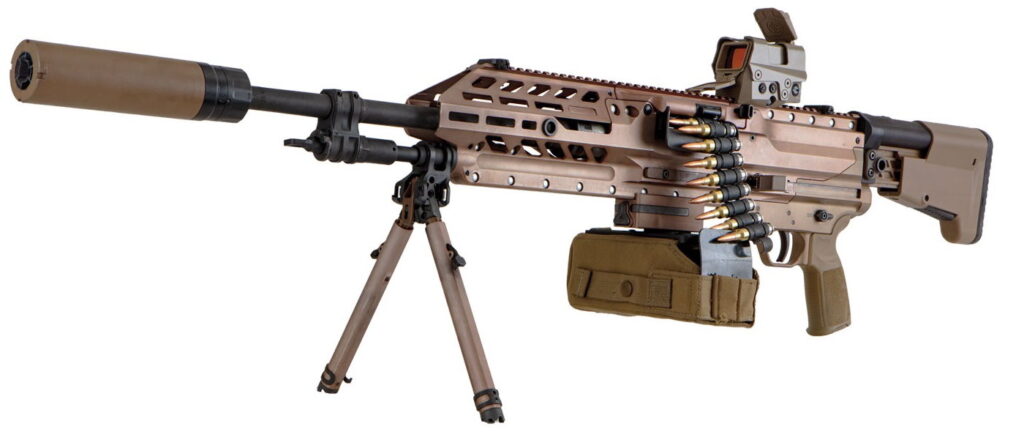
While the light machine gun isn’t fully gone, its future seems to be up in the air. Maybe it won’t be the future of squad support weapons, but maybe lighter machine guns remain the best choice for so-called light infantry. Only time will tell.


